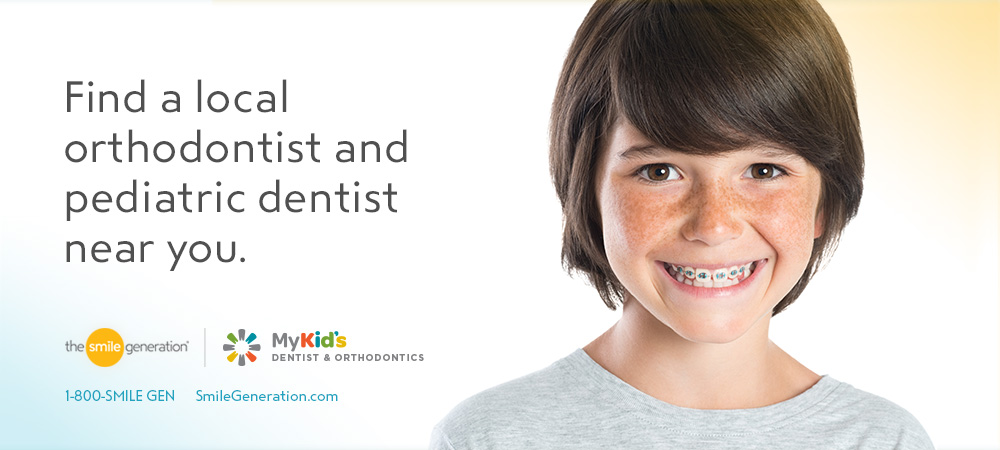The goal of the first appointment is to determine if treatment is needed and, if so, the best way to proceed. A thorough clinical examination of your child’s teeth, gums, and supporting bone structure will be performed. Photographs, x-rays, and impressions of the teeth and mouth will be taken, which will be used to determine a diagnosis and treatment plan. Your orthodontist will explain any concerns before recommending a customized treatment plan, which may include appliances, such as retainers or expanders for the malocclusion, or working with a specialist, such as a pediatric dentist or oral surgeon.
Frequently Asked Questions
- When should my child see an orthodontist?
Age is not a factor when deciding whether your child is a candidate for orthodontic treatment. Healthy teeth can be moved at any age. While there’s no ideal age for treatment to begin, we recommend that your child see an orthodontist by age 7.
- Why does my child need to see an orthodontist at such a young age?
This is a preventative step to catch dental concerns before they become worse down the road. These dental concerns may include teeth coming in the wrong way, jaw issues such as cross-bites, and other concerns that may cause harm to permanent teeth. If an issue is caught early enough, oral surgery or tooth loss can often be prevented.
- Why an orthodontist? Doesn’t a dentist do the same thing?
A pediatric dentist is essential for your childʼs oral health when it comes to cavities, cleanings, teeth injuries, and checkups. An orthodontist takes a step back and looks at the big picture: tooth development; jaw and facial growth; a bad bite; and impacted or missing teeth.
- Can my child get braces if he or she is missing teeth?
It may be possible to have a successful orthodontic treatment with teeth missing, but it depends on the circumstances and treatment goals. An orthodontic treatment can close the space of a missing tooth or create/save sufficient space for replacement teeth. Consult your orthodontist to discuss what is right for your child.
- Are there any foods my child shouldn’t eat with braces?
Yes, your child should stay away from anything sticky, chewy, hard, or crunchy. Brackets or appliances will break if patients are not careful with what they eat and how they chew, which slows down treatment. Sugar intake should also be limited.
- Do braces hurt?
There will be some discomfort when first receiving braces or appliances, but most patients adapt within a few days. Your orthodontist will provide wax to place around any bracket or wire causing discomfort until your child’s cheeks and lips toughen up and get used to the braces. After each adjustment, your child’s teeth may be sore for a few days. Orthodontists use flexible wires with lower forces compared to braces in the past, which results in less discomfort. Giving your child Tylenol an hour before his or her appointment will also help reduce discomfort.
- How do you clean around the braces?
It is important to keep your child’s teeth clean. This will prevent gingivitis, white spots, or cavities from developing around the braces. It does take extra effort to keep plaque away from braces and gums, but it is important to keep the area between the bracket and gum-line free from plaque. A floss threader or Oral-B Super Floss cleans between the teeth; a Waterpik or electric toothbrush cleans around the braces.
- How much do braces cost?
The cost of treatment can vary depending on the severity of the case, whether additional appliances are needed, the phase of treatment, and your insurance benefits. Braces are an investment in your child’s smile, and we do everything possible to make treatment affordable. The cost can be spread out over the time your child is in treatment.
- Do I have to have insurance to have orthodontic treatment?
No, insurance is not required. Since My Kid’s Dentist and Orthodontics locations are Smile Generation-trusted offices, we can offer alternative payment options, such as the My Smile Dental Plan, to help you take care of your family’s oral health.
- How long do retainers need to be worn?
As soon as your child’s braces come off, their teeth are in an unstable state. Without wearing a retainer, his or her teeth will begin to shift back. Retainers are worn full-time at first, potentially through the first year. By the second year, it may only be necessary for your child to wear the retainer at night. By the third year and into adulthood, the retainer should be worn at least a few nights per week.

Do you have a question not answered in this blog? Find the closest My Kid’s Dentist and Orthodontics near you. Mention this blog post to receive a complimentary orthodontic consultation*. From baby teeth to braces, we provide dental care that grows along with your child!

















Thanks for the mention! Smiles Change Lives works with families unable to afford the full cost of braces to match them with caring orthodontists willing to donate care. While we have great providers all over the Kansas City area, we work with families and providers across the US and Canada.